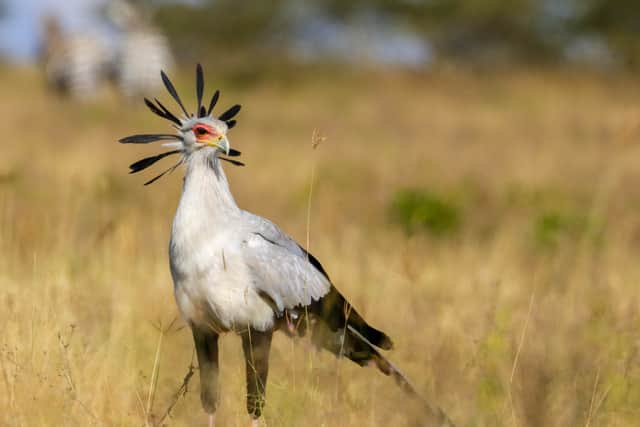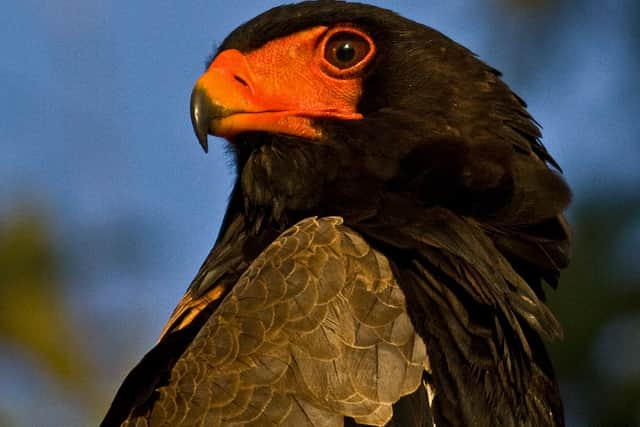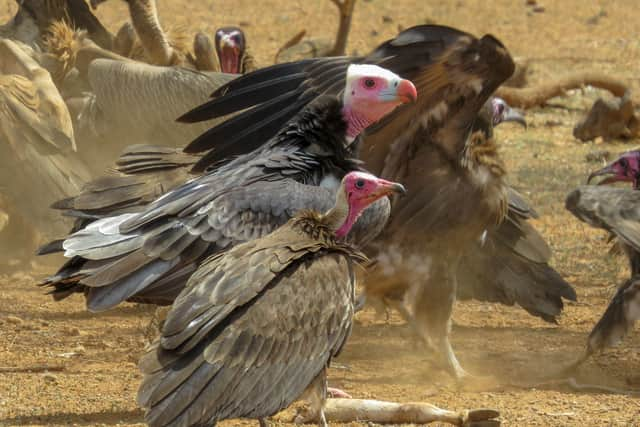Birds of prey: Africa's raptors facing 'widespread population collapse' - UK-led study finds
and live on Freeview channel 276
Africa’s birds of prey are dying a "deaths from a thousand cuts", with scientists now warning many species are now on the brink of an extinction crisis.
A new report, led by researchers from the University of St Andrews and The Peregrine Fund and published in science journal Nature Ecology & Evolution on Thursday (4 January), found declines among nearly 90% of the 42 species examined. Many iconic species could even disappear entirely from parts of the continent by the end of the century without urgent help, researchers warned.
Advertisement
Hide AdAdvertisement
Hide AdThe study looked at road survey counts across four different African regions, and how they have changed over the past few decades. The data showed large raptor species had experienced significantly steeper declines than smaller ones, particularly on unprotected land - where they were more vulnerable to persecution and other human pressures.


Overall, raptor numbers had dropped more than twice as quickly outside of National Parks and reserves. Worryingly, researchers also found many species experiencing the steepest declines had suffered a double jeopardy - also becoming much more dependent on protected areas over the course of the study.
Unless many of the threats currently facing African raptors are addressed quickly and effectively, the continent's large, charismatic eagle and vulture species are unlikely to survive across much of Africa's unprotected land by the latter half of this century, the scientists warned.
Dr Phil Shaw, from St Andrews' School of Biology, said that since the 1970s extensive areas of forest and savanna have been converted into farmland, intensifying the pressure on birds of prey. "With the human population projected to double in the next 35 years, the need to extend Africa’s protected area network – and mitigate pressures in unprotected areas – is now greater than ever," he said.


Advertisement
Hide AdAdvertisement
Hide Ad"Africa is at a crossroads in terms of saving its magnificent birds of prey," co-author Dr Darcy Ogada, from The Peregrine Fund, added. "In many areas we have watched these species nearly disappear. One of Africa’s most iconic raptors, the Secretary bird, is on the brink of extinction.
"There’s no single threat imperilling these birds, it’s a combination of many human-caused ones, in other words we are seeing deaths from a thousand cuts," he continued. The study also highlighted steep declines among raptors that are currently classified as being of ‘least concern’ in the global Red List of threatened species.


They included species native to Africa, like the Wahlberg's eagle, African hawk-eagle, long-crested eagle, African harrier-hawk, and brown snake-eagle, as well as the dark chanting-goshawk. All of these species have declined at rates suggesting that they may now be globally threatened.
Several other familiar, widespread raptor species are now scarce or absent altogether from unprotected land. They include one of Africa’s most powerful raptors, the martial eagle, as well as the distinctive bateleur - known for its black, mane-like feathers and starkly orange face. Raptors of all sizes lead an increasingly perilous existence on Africa’s unprotected land, where suitable habitat, food supplies and breeding sites have been drastically reduced, and persecution from pastoralists, ivory poachers and farmers is now widespread - issues not unique to Africa, with British birds of prey often facing similar persecution.
Advertisement
Hide AdAdvertisement
Hide AdWorld-leading ornithologist Professor Ian Newton, who was not involved in the study, said that the important paper drew attention to massive declines in predatory birds across much of Africa. "This was the continent over which, only 50 years ago, pristine populations of spectacular raptors were evident almost everywhere, bringing excitement and wonder to visitors from many parts of the world," he said.
"The causes of the declines are many – from rampant habitat destruction to growing use of poisons by farmers and poachers and expanding powerline networks – all ultimately due to expansions in human numbers, livestock grazing and other activities," Professor Newton continued. "Let us hope that more research can be done and, more importantly, that these birds can be protected over ever more areas, measures largely dependent on the education and goodwill of local people.”
The study’s authors also launched the African Raptor Leadership Grant in 2023 to help with this immediate need for more research and conservation programs. It supports educational and mentoring opportunities for emerging African scientists, boosting local conservation initiatives and knowledge of raptors across the continent.
The first grant recipient was Joan Banda, a raptor research student at AP Leventis Ornithological Research Institute in Nigeria, who will be studying threats to African owls.
Comment Guidelines
National World encourages reader discussion on our stories. User feedback, insights and back-and-forth exchanges add a rich layer of context to reporting. Please review our Community Guidelines before commenting.
